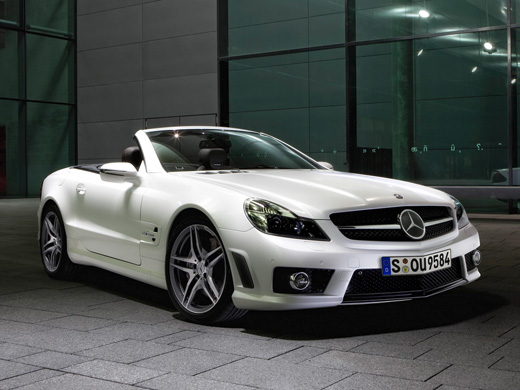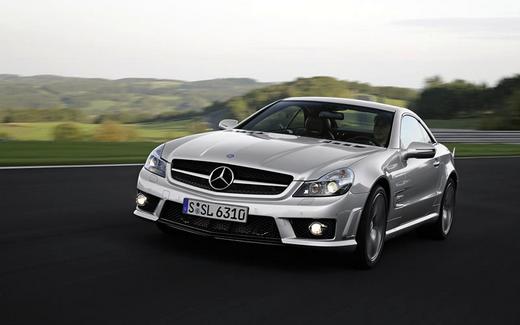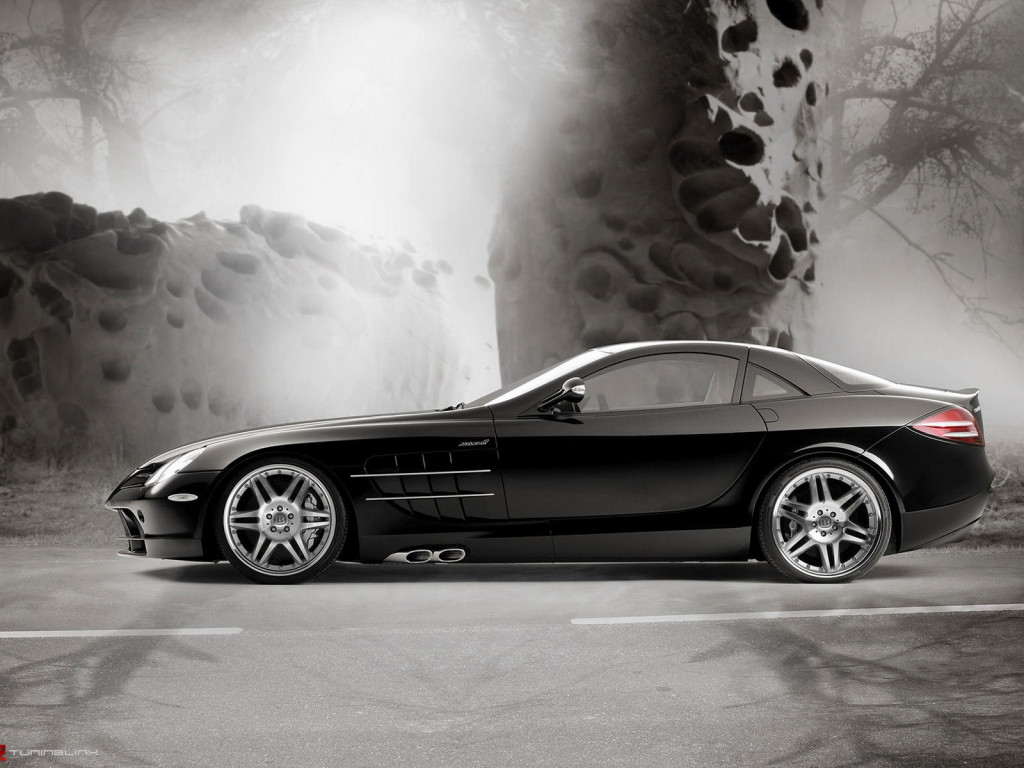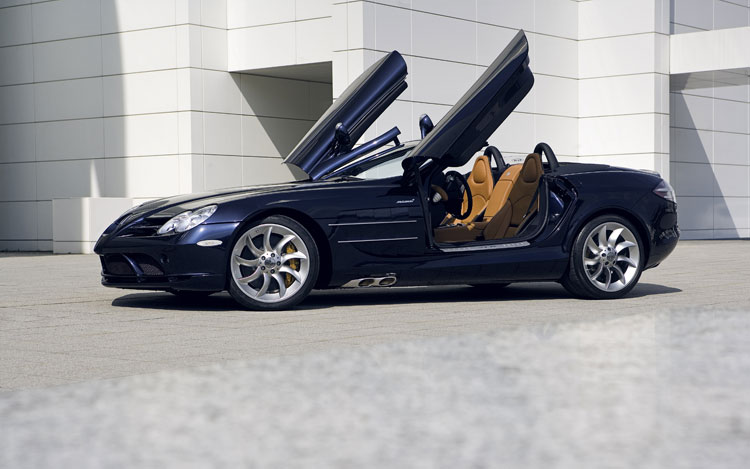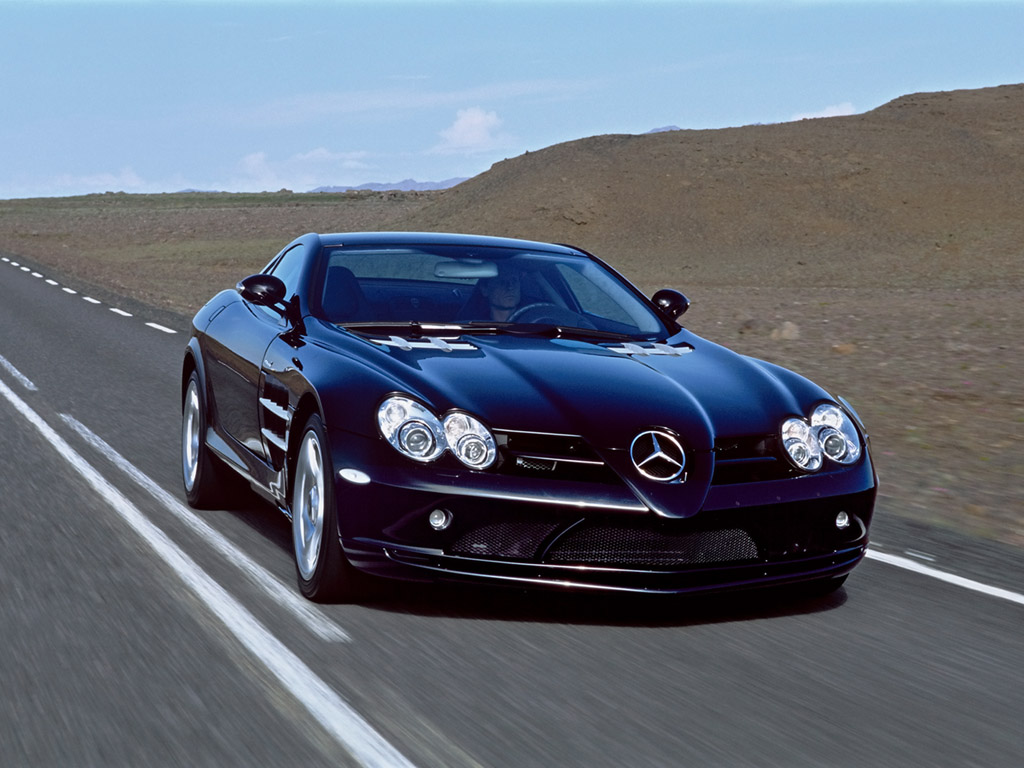Affalterbach — Following its world premiere at the Geneva Motor Show, the new Mercedes SLK55 AMG will be showing what it is capable of in its new role as the official Formula 1 safety car. Specifically, the compact eight-cylinder roadster will be celebrating its circuit debut at this year’s Grand Prix season opener on March 7, 2004 in Melbourne, Australia. Thanks to modifications to its braking system, chassis, cooling system and exhaust system, as well as weight-reduction measures, the Mercedes SLK55 AMG safety car will be showing off its optimized driving dynamics and maximized stability. And the improvements will prove very useful: After all, the newcomer will have to lead the world’s fastest drivers around the track at high speed in the event of a circuit emergency, while ensuring maximum safety.

Mercedes SLK55 AMG
And the new C 55 AMG estate is also making its first appearance at the most prestigious level of motor sports. Prof. Sid Watkins, the Grand Prix chief medical officer, will be able to use the high-performance official medical car with the AMG V8 engine to ensure the fastest possible response in the event of a emergency. The powerful AMG cars will be ready for action at all 18 Formula 1 races, where they will be able to demonstrate their sporty prowess in front of billions of race fans worldwide.
With Bernd Mayländer, 34 — a professional racing driver — behind the wheel, the safety car is taking on the challenge of keeping the Formula 1 cars out of harm’s way in the event of crashes and bad weather conditions. In other words, Mayländer will have to position himself at the head of the field and drive at top speed in front of the Formula 1 cars. And if the speed becomes too low, the high-tech engines that power the sensitive Formula 1 race cars could start to experience problems. For example, they could overheat due to an inadequate supply of cooling air, while the tires could cool down too much and lose their grip. Fast laps at top speeds of up to 240 km/h at the world’s Grand Prix tracks are therefore everyday occurrences for the safety car, which masters these situations with no problems.
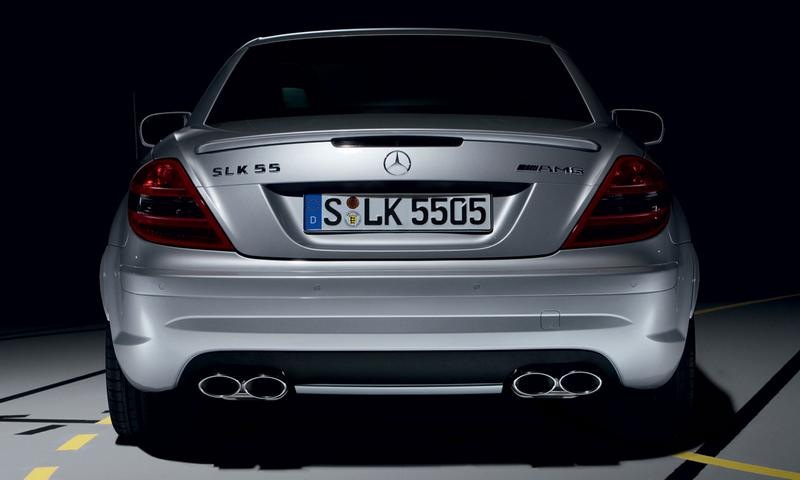
Mercedes SLK Class & Mercedes SLK55 AMG
Few — but focused — technical changes to the new Mercedes SLK55 AMG
For its demanding assignment as the Formula 1 safety car, the SLK 55 AMG required modifications that were few in number but very sharply focused. The distinctive sporty strengths of the new two-seater developed by Mercedes-AMG were only supplemented in areas that would generate maximum high-performance and reliability for circuit operation. In place of the standard 18-inch tires, for example, new multi-part 19-inch AMG light-alloy, double-spoke rims with special 235/35 R 19 and. 265/30 R 19 tires have been used. And together with the firmer chassis tuning, the car can handle higher curve speeds and has even more agile handling.
The enhanced performance of the new, enlarged braking system ensures that the car remains perfectly stable and exhibits optimal deceleration. Composite brake discs with six-piston brake calipers are installed on the front axle, and internally ventilated and perforated steel brake discs with four-piston calipers provide the stopping power in the rear. Channels that direct cooling air to the front brakes — which have to bear particularly high stresses — were specially engineered for the safety car’s use in a racing environment.
Weight reduction: nearly 100 kilograms lighter than the series-production car
In order to deliver world-class racing performance, the weight of the safety car was trimmed by nearly 100 kilograms in contrast to the series-production vehicle. And this was achieved despite the fact that the car became heavier right from the outset because of its added components — including communication equipment, lights, cooling systems for the rear axle and brakes, and larger wheels and brakes. Aluminum was used in place of steel for the bonnet and other components, representing a weight saving of about 12 kilograms. The DaimlerChrysler specialists at the Bremen plant played a key role in slashing the car’s weight. Keeping the vario-roof closed at all times made it possible to dispense with its mechanical and hydraulic systems, saving another 17 kilograms. The front and rear valences are made of an extremely lightweight, high-strength carbon-fiber laminate material. Carbon-fiber laminate is a high-tech solution known for its applications in Formula 1 and the DTM. The valences weigh ten kilograms less than those used in the series-production Mercedez SLK . Additional weight reductions were realized with the headlamps ( 4 kg), seats (25 kg), the car’s entire wiring (4 kg), its interior (40 kg) and numerous other measures, giving the safety car a curb weight of 1,370 kg. In comparison, the curb weight of the Mercedes SLK55 AMG series-production vehicle is 1,465 kg (not including the fuel and driver).
All these modifications also result in optimized weight distribution, which means superior handling on the circuit. The car’s battery and windscreen fluid reservoir were moved from the engine compartment to the boot, enhancing this advantage even more.

Mercedez SLK & Mercedes SLK55 AMG
Engine and drive: characteristic V8 sound with optimized cooling
The engine and drive of the unique Mercedes SLK AMG greatly resemble their series production versions. The 5.5-litre V8 engine from AMG delivers 265 kW/360 hp and accelerates the silver two-seater from 0 to 100 km/h in under five seconds. What’s more, its convincing eight-cylinder sound is sure to appeal to racing fans watching at the track or on TV. The sports car was given a newly developed exhaust system with reduced back pressure and a special sound for Formula 1 use.
And to ensure that even the toughest of weather conditions are no problem, the Mercedes SLK55 AMG safety car is also fitted with a high-performance water cooler, two engine oil coolers - in the sides of the front apron and a larger transmission oil cooler. The rear differential has cooling fins and a separate cooler installed into the rear valence. The air stream is distributed through it by a diffuser, thus helping to prevent the rear-axle oil from overheating. When the car is stationary, an electric fan is employed to increase safety even further.
Roof lights send out clear signals to the Formula 1 drivers
Two visual features make the safety car stand out from the series-produced Mercedes SLK55 AMG: the FIA Formula 1 logos and the light system on the roof. The green lights are turned on by Mayländer’s co-driver, Peter Tibbets (UK) from the FIA, when the safety car pulls out and first has to overtake all of the racing cars. As soon as the safety car has taken the lead, the orange light signals to the Formula 1 drivers that overtaking is strictly forbidden. The white strobe lights in the headlights and tail lights remain active whenever the car is in use and have a neutral signal function.
To enable communication with the race organizers, the safety car is equipped with a radio system, a TV monitor and cameras installed inside and out. This extra equipment requires a separate electrical circuit with a second generator. The very special character of the new Mercedes-AMG FIA safety car is typified by the two bucket seats with four-point seatbelts, the exclusive black-and-silver leather fittings, Formula 1 tread panels, a particularly eye-catching AMG sports steering wheel and high-quality carbon trim.
C 55 AMG estate: Medical car for Formula 1 chief medical officer Sid Watkins
Professor Sid Watkins, the official FIA Grand Prix chief medical officer, now has a new Mercedes-Benz C 55 AMG estate as a medical car to ensure that he can reach and treat racing drivers who have been involved in an accident as quickly as possible. The communication system, chassis and brakes of the high-performance car, which is powered by a 5.5-litre V8 engine that delivers 270 kW/367 hp, were remodeled especially for the Formula 1 world championships. On the monitor of the medical car’s COMAND system, the occupants can follow the race live. The car also boasts a radio system for communicating with the race organizers, roof lights and strobe lights front and rear.
A high level of safety for Professor Sid Watkins and the three medical assistants is guaranteed by four-point belts at each seat. The roomy boot of the C55 AMG estate houses a complete emergency aid kit to treat severely injured patients.
Cooperation between production and overall vehicle development at AMG
AMG production, which specializes in small-batch series and customized individual components, and the test team from AMG overall vehicle development were responsible for the development, track tests and bodywork of the two safety cars and two medical cars (one main vehicle and one replacement in each case). The engineers and technicians responsible were greatly helped by the company’s 37 years of experience in motor sports and the development of high-performance sports cars. Numerous test drives were conducted at different Formula 1 tracks in order to determine the chassis tuning and ensure that of all the components satisfy strict safety requirements. Racing driver Bernd Mayländer was involved in every stage of the development. Two highly qualified AMG engineers are overseeing the operation of the AMG vehicles at all 18 Formula 1 race meetings.
Six generations of Mercedes-AMG safety cars since 1996
Following in the footsteps of the C 36 AMG (1996), the first CLK 55 AMG (since 1997), the CL 55 AMG (since 2000), the SL 55 AMG (since 2001) and the CLK 55 AMG (2003), the new SLK 55 AMG is the sixth official safety car from Mercedes-AMG. An AMG E-Class coupe with a V8 engine was employed as a medical car as far back as 1984. The activities of Mercedes-AMG testify to the long-standing involvement of DaimlerChrysler in the Formula 1.
